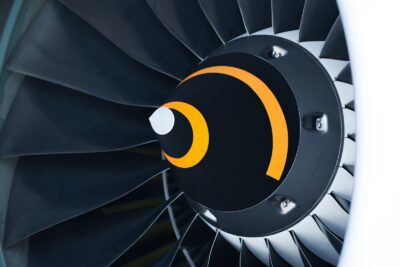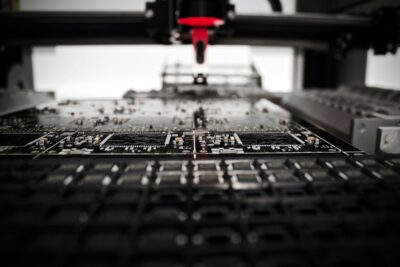The Role of Composite Materials in Modern Aircraft Manufacturing
Introduction to Composite Materials
Composite materials have become pivotal in the aerospace industry, marking a significant shift towards more sustainable aviation practices. These materials, a blend of two or more constituent elements with differing physical or chemical properties, create a final product with unique characteristics that traditional materials cannot offer. By incorporating composite materials in aircraft manufacturing, the industry addresses critical sustainability goals, reducing both fuel consumption and carbon emissions.
The use of composites such as carbon fiber reinforced polymers (CFRPs) is increasingly common in aircraft manufacturing. These materials provide superior strength-to-weight ratios compared to traditional metals like aluminum and steel. This weight reduction directly translates to lower fuel consumption, as lighter aircraft require less energy to operate. In turn, this fuel efficiency leads to significant reductions in carbon emissions, making flights more environmentally friendly.
Moreover, the lifecycle of composite materials also contributes to sustainability. Unlike metals, composites are less prone to corrosion and fatigue, leading to longer service lives and less frequent need for replacements. This durability reduces the environmental impact associated with manufacturing new parts and disposal of old ones. Thus, the adoption of composite materials in aircraft manufacturing represents a holistic approach to achieving sustainability in the aerospace industry.
Economic and Environmental Benefits
The economic and environmental benefits of using composite materials in aircraft manufacturing are substantial. From a financial perspective, airlines can achieve significant cost savings through reduced fuel expenditures. Given that fuel costs constitute a major portion of an airline’s operating expenses, the efficiency gains from lighter, composite-made aircraft can enhance profitability and operational efficiency.
Environmental benefits are equally impressive. The aviation industry has been under increasing scrutiny for its environmental impact, particularly its contribution to greenhouse gas emissions. Composite materials, by enabling lighter and more fuel-efficient aircraft, help mitigate these emissions. For instance, the Boeing 787 Dreamliner, which extensively uses composite materials, boasts a 20% reduction in fuel consumption compared to similar-sized conventional aircraft. This not only lowers operational costs but also lessens the environmental footprint of air travel.
Furthermore, the production processes for composites are evolving to be more environmentally friendly. Innovations in manufacturing techniques, such as automated fiber placement and resin transfer molding, reduce waste and improve material efficiency. These advancements, combined with the inherent benefits of composites, support the aviation industry’s sustainability goals and its commitment to reducing its environmental impact.
Challenges and Future Prospects
Despite the clear benefits, the adoption of composite materials in aircraft manufacturing is not without challenges. One of the primary obstacles is the high initial cost of composite materials and the specialized manufacturing processes required. These costs can be a barrier for widespread adoption, particularly among smaller aircraft manufacturers and airlines.
However, as technology advances, the costs associated with composite materials are expected to decrease. Increased research and development efforts are focused on improving manufacturing efficiency and material performance. Innovations such as recycling composites and developing new composite formulations with enhanced properties are paving the way for broader adoption in the industry.
Looking ahead, the future of composite materials in aircraft manufacturing appears promising. The ongoing push towards greener and more sustainable aviation solutions is likely to drive further advancements in composite technologies. Collaborative efforts between governments, industry stakeholders, and research institutions are essential to overcome current challenges and unlock the full potential of composites.
The Impact of Composite Materials on Fuel Efficiency
The integration of composite materials in aircraft design significantly impacts fuel efficiency. As previously mentioned, composites like CFRPs are much lighter than traditional metals, reducing the overall weight of the aircraft. This weight reduction leads to decreased fuel consumption, which is crucial for both economic and environmental sustainability.
For instance, the Airbus A350 XWB, which utilizes over 50% composite materials, has shown remarkable improvements in fuel efficiency. This aircraft achieves around a 25% reduction in fuel consumption and CO2 emissions compared to previous generation aircraft. Such advancements highlight the transformative potential of composite materials in driving fuel efficiency and reducing the environmental impact of aviation.
Furthermore, the use of composites allows for more aerodynamic designs. These materials can be molded into complex shapes that enhance the aerodynamic properties of the aircraft, further contributing to fuel savings. The synergy between weight reduction and improved aerodynamics underscores the critical role of composite materials in the quest for more efficient and sustainable air travel.
Carbon Emissions Reduction through Composite Adoption
Reducing carbon emissions is a key priority for the aviation industry, and composite materials play a central role in achieving this goal. By facilitating lighter aircraft and improving fuel efficiency, composites directly contribute to lower carbon emissions. The reduced fuel burn not only cuts operational costs but also minimizes the release of greenhouse gases into the atmosphere.
Airlines are increasingly adopting composite materials as part of their sustainability strategies. The use of composites in the Boeing 787 Dreamliner and Airbus A350 XWB are prime examples of how these materials help in achieving significant carbon emissions reductions. These aircraft set new standards for environmental performance in commercial aviation.
In addition to the operational phase, the production and lifecycle management of composites are also becoming more environmentally conscious. Efforts to recycle composite materials and reduce waste during manufacturing are gaining traction. These practices ensure that the environmental benefits of composites extend beyond the operational lifespan of the aircraft, contributing to a more sustainable aviation industry overall.
Conclusion
The adoption of composite materials in aircraft manufacturing is a critical step towards a more sustainable aviation industry. By offering significant improvements in fuel efficiency and reducing carbon emissions, composites address both economic and environmental challenges. Despite the initial costs and manufacturing complexities, the long-term benefits make composites an invaluable asset in modern aircraft design.
As technological advancements continue to drive down costs and improve material performance, the use of composites in aviation is expected to expand. Collaborative efforts across the industry are essential to fully realize the potential of these materials. Ultimately, the integration of composite materials represents a forward-looking approach that aligns with global sustainability goals and the aviation industry’s commitment to reducing its environmental impact.
The future of aviation will undoubtedly be shaped by the continued innovation and adoption of composite materials, paving the way for greener, more efficient, and sustainable air travel.
#CompositeMaterials #AviationSustainability #AircraftManufacturing #FuelEfficiency #CarbonEmissionsReduction #GreenTechnology #AerospaceIndustry #EnvironmentalImpact #SustainableAviation #ModernTechnology























